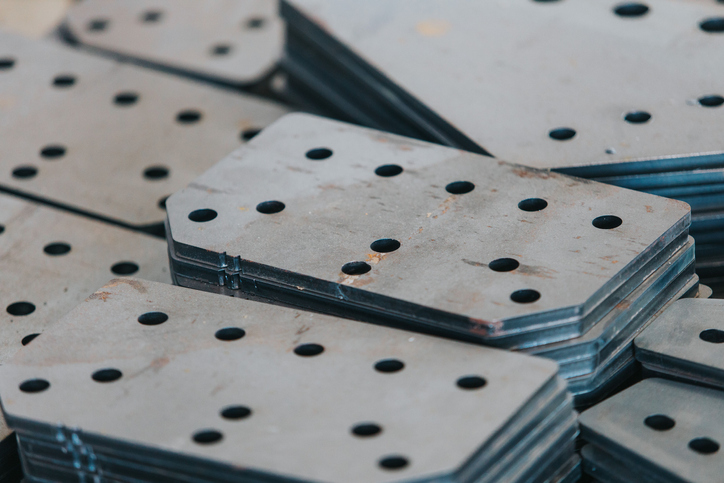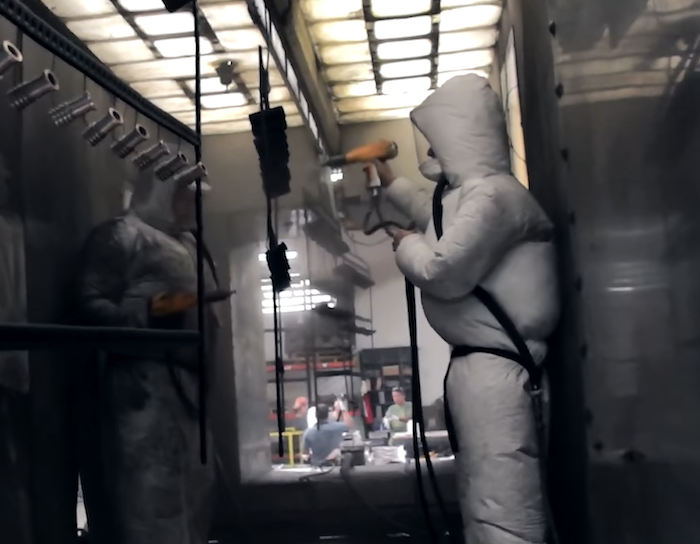Die maintenance and repair is an essential aspect of ensuring productivity in a metal stamping process. Generally, it begins with inspection, and then a series of activities to correct issues identified during the inspection. This article reviews the features of high-quality dies, a typical maintenance and repair procedure, and minimizing the costs of this process.

Selecting a High-Quality Die
Implementing a successful tool management program largely depends on selecting a high-quality one in the first place. Because dies serve in cutting and forming parts into a specific profile/shape, there are certain attributes they should possess.
- Durable Material: Die materials should have high hardness and be durable enough for reuse several times. There are a range of materials that can serve, with each application having materials that are more suitable. For example, tool steel delivers better wear resistance than high-speed steel, but is more brittle. On the other hand, high-speed steel has greater impact resistance, but this comes at a higher cost.
- Repeatable Design: The design of a die should be such that it delivers no or minimal variations per end product. Some common flaws that can affect repeatability include having guidance pins and bushings that are too small, as well as insufficient pressure pads.
- Tight Tolerances: Having tight tolerances also helps minimize variations in end products. Also, components should be discrete or have specific details that prevent incorrect placement of the die after repair and maintenance.
Standard Die Maintenance and Repair Procedure
The maintenance and repair procedure may vary depending on factors like the type of die, manufacturer, and application. However, there are basic steps whenever carrying out this process.
Inspection
Routine inspections are necessary in order to identify minor issues before they become costly repairs. Ideally, critical components like dies, punches, guide pins, and springs should be checked before and after production runs. Key things to check for include wear patterns, cracks, deformations, misalignments, missing dowel pins, loose screws and fasteners, as well as galled die sections. Also, there are other signs that indicate a need to carry out maintenance or repair.
- Burs on the end product.
- Tolerances going out of spec.
- Noises from your tool.
- Tonnage going up on your press.
An inspection procedure entails visual inspection, dimensional measurement, and in some cases non-destructive testing (NDT). It is important to thoroughly document every inspection, noting the condition of each component and the actions taken or recommended. This is crucial for maintaining the history of the condition of the die, as well as planning future maintenance schedules.
Cleaning and Lubrication
If no significant issues are identified during inspection, the next step could be cleaning and lubrication. Ideally, cleaning should be done before and after every production run to remove debris, dirt, or any foreign object from the die surface. Because the presence of these adversely affect the quality of the end product. Lubrication, on the other hand, does not need to be as frequent as cleaning. Rather, it is important to assess the lubrication level before each production run and ensure it is sufficient so as to minimize friction and sticking/galling during stamping operations.
The level of cleaning required depends on observations during inspection. When debris and dirt are minimal, cleaning can be done in-situ using a non-abrasive cloth to wipe with or without the aid of solvent cleaners. If the dirt is significant, then it may be necessary to disassemble the die for a more thorough cleaning process. To do this, the die is lifted from the assembly using a chain hoist or lifting beam to where cleaning will be carried out. Cleaning entails spraying the die with, or immersing it into a process tank containing a hot (above 70℃), high-pressure, filtered aqueous solution/detergent. The choice of solution could be neutral, acid, or alkaline depending on the die material. One advantage of immersion is that the operator is not exposed to the cleaning fluid, which increases safety, saves time, and minimizes environmental impact.
Die Repair and Replacement
The level of deterioration of the die will determine if it undergoes repair, or requires replacement. Usually, the tool maker will specify the parameters that influence this decision, so that the operator assesses them during inspection. Some common repair activities for dies include sharpening, shimming, welding, and alignment and recalibration.
- Sharpening: Generally, the cutting and punching sections of a die are the most susceptible to wear and require regular sharpening. This is usually carried out using a grinding wheel but requires a well-trained professional to avoid damage to the tool. Having blunt or dull dies can result in burs, feeding problems, material waste, and even safety issues.
- Shimming: Shims help dies to maintain the correct timing when cutting and punching materials. When working on shims, ensure that they are clean, and positioned properly before every production run. Also, shims should maintain proper clearance from slug drop holes, fasteners, and dowels. Use the right number of shims, as using too few or too many can impact the speed of the die.
- Welding: It may be necessary to weld parts of the die to strengthen them if there are cracks, or to join broken parts. After welding, there may be a need for some heat treatment to relieve stress from around the weld.
- Alignment and Recalibration: Dies could become misaligned over time, which results in variations to your product. If this is identified during inspection, then recalibrate and verify alignment restoration using trial production runs.
How to Reduce Die Maintenance and Repair Costs
At ITD Precision, we are able to deliver high-quality metal stamping services at competitive rates by minimizing die maintenance and repair costs. Some crucial steps we take to achieve this include:
- Purchase high-quality dies and components to minimize maintenance and replacement needs.
- Partner with a trusted manufacturer to set up an efficient preventive maintenance program. Because this ensures that you always select the lowest cost option for your application in the long run.
- Use the right tools for the right applications. It may be necessary to utilize custom or specialty tools of various sizes, strengths, or materials.
- Know when to use advanced tooling. Specific applications (e.g. high temperature or high pressure) require more toughness, wear resistance, or compressive strength than standard components can handle.


